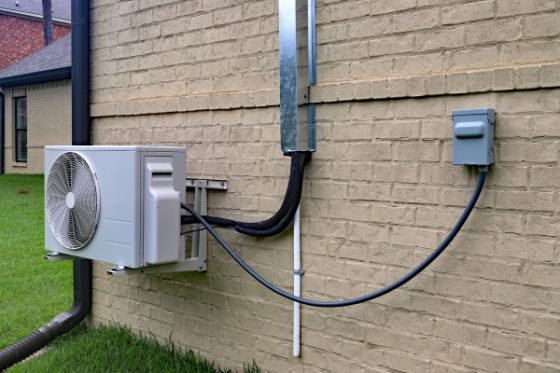Five Signs Your Home Is Making You Sick
Many people find themselves feeling inexplicably ill in certain indoor environments. This is known as sick building syndrome (SBS) and can be caused by commercial or residential structures. It is usually attributed to poor indoor air quality and causes a variety of symptoms.
If you find yourself feeling constantly ill, this can be one of the signs your home is making you sick and you may be suffering from sick building syndrome. Fortunately, there are some ways to prevent and alleviate the symptoms. Read below to learn more!
Signs Your Home is Making You Sick
1. General Fatigue and a Lack of Energy
You will find yourself constantly feeling tired and lethargic if your home is making you sick. It will seem like you are always in a fog and cannot focus but you’ll be unable to pinpoint the exact reason why. Chronic fatigue, headaches, irritability, anxiety, dizziness, and mood swings are some of the many signs of sick building syndrome. Some people even struggle to wake up rested and energetic after a full night’s sleep.
2. Respiratory Problems
Poor indoor air quality can also cause respiratory problems. These include shortness of breath, chest pain or tightness, and constant sinus congestion. Some of these problems are short-term and may go away as soon as you exit the irritating premises.
However, long-term exposure over the course of several years can lead to the development of long-term illnesses such as asthma and chronic bronchitis. Anybody suffering from chronic illnesses already will experience worsening symptoms in a “sick building.”
3. Allergy-Like Symptoms
Living in a home with poor air quality may also cause allergy-like symptoms. There may be a potential allergen such as mold, dust, or mildew present that is irritating your immune system. In addition to the aforementioned respiratory symptoms, you may notice dry, red, and irritated eyes. When you are constantly coughing and sneezing, it may be one of the signs your home is making you sick.
4. Skin Problems
The air in your home can also cause various skin problems. Exposure to airborne allergens can make your skin feel dry, itchy, or oily. Many also suffer from persistent acne breakouts that linger even with the use of skincare products. In extreme cases, you may notice rashes or hives.
5. Frequently Developing Illnesses
Living with airborne allergens weakens the immune system over time, which makes you more susceptible to other illnesses caused by germs, viruses, and bacteria. Allergies can even develop into respiratory or sinus infections if not properly and effectively treated.
Many of the mentioned allergy symptoms are similar to the common cold, flu, and other illnesses, which can make it harder to diagnose.
What Can I Do About It?
There are many ways to alleviate the symptoms of sick building syndrome. The main way is to reduce exposure to harmful allergens, but that is difficult when they are in your home. You must take the necessary steps to purify the air and eliminate the source of contaminants.
1. If you think your home is making you sick, you should schedule an appointment with a doctor. Be sure to list your symptoms and mention that they are frequent or intense in your home specifically. They will recommend a necessary course of action that can help you feel better.
For instance, they can test for certain allergies such as dust and mold. The test results will help pinpoint the exact cause of your symptoms, and the doctor will prescribe medications or recommend other treatments such as over-the-counter medication.
2. You could also visit a specialist for specific symptoms. For example, see a dermatologist if you are suffering from rashes, hives, or other skin problems. They can prescribe lotions, creams, or moisturizers and recommend over-the-counter products as well.
3. Regular cleaning helps deter the buildup of allergens that may be making you sick, so keeping a clean house is another way to help lessen your symptoms. Dust, mold, mildew, and other harmful allergens thrive in dirty houses, but there are several easy ways to keep them at bay and keep your house looking fresh.
Avoid smoking indoors because the cigarette ash and smoke can linger in the air and embed itself in the carpet fibers. Over time, this will worsen your symptoms. Cleaning the floors will also help reduce your symptoms. Regularly vacuuming carpets and wiping hardwood or tile floors helps remove any dust, dirt, or other allergens.
4. Professional carpet cleaning is recommended annually or semi-annually to remove the allergens that are deeply embedded in carpet fibers. Additionally, you should use non-toxic cleaning products in your home. Certain cleaning products contain toxins, chemicals, and additives that can enhance some of your symptoms. You should notice a significant improvement in your symptoms if you keep a very clean house.
A Ductless Mini Split in Your Home
Since most sick building syndrome symptoms are caused by airborne allergens, you must take measures to improve your home’s air quality. If your home has a central ducted HVAC system, consider replacing it with a ductless mini-split.
The ducts of a central HVAC system are the perfect spot for dust, dirt, mold, and other allergens to grow. They are then dispersed throughout the house, which can worsen your symptoms.
Fortunately, this is eliminated with a ductless mini-split system. They are an efficient way to heat and cool your home while providing benefits such as advanced comfort, decreased energy costs, and simplified installation and maintenance.
Ductless mini-splits also act as air filters, purifiers, and dehumidifiers. While they are heating and cooling your home, they are simultaneously removing any harmful airborne allergens and particles. They also remove moisture from the air, which helps prevent mold and mildew growth.
Be sure to check the mini split manual for any filter maintenance and replacement instruction. Removing the filter and wiping it with a cloth every four to six weeks and replacing it annually will help keep your mini-split efficiently filtering out any harmful allergens and improving your home’s air quality.
In conclusion, there are many different signs your home is making you sick. By taking these easy steps, you can get back to living comfortably in no time! For those who don’t have a food allergy or suspect they do but aren’t sure, here’s what you need to know about how food allergies develop and how to handle them.









